15 years one-stop China custom CNC machining parts factory
 570 |
Published by VMT at Oct 10 2024
570 |
Published by VMT at Oct 10 2024
In CNC machining, milling cutter tools are essential for shaping, cutting, and removing material from a workpiece. Whether you're working on CNC prototype machining or large-scale production, selecting the right type of milling cutter ensures precision, efficiency, and a high-quality finish. With a wide variety of milling tools available, understanding their types, features, and applications is crucial to making informed choices in a CNC machining factory.
This comprehensive guide explores the different types of milling cutters, their uses, materials, and tips for selecting the right tool for your project.
Milling cutters are tools that are mounted on milling machines to perform cutting operations by rotating at high speeds and removing material from the workpiece. The machine moves the workpiece against the cutter or vice versa, allowing the tool to cut, shape, or finish the surface. Milling operations can include cutting, slotting, drilling, and contouring, depending on the tool and machining parameters.
In custom CNC machining, milling cutters are programmed via CNC systems to execute precise movements and cuts, ensuring uniformity and high precision. These tools can work on a wide variety of materials, including metals, plastics, and composites, making them versatile for numerous applications.
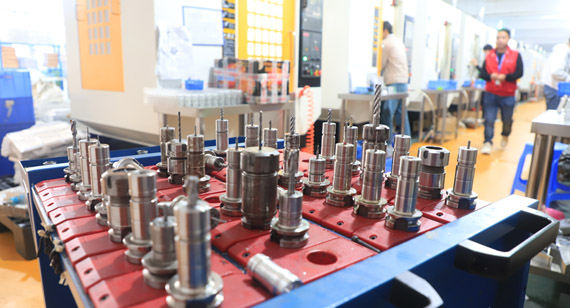
Milling cutters come in various designs and geometries, each suited for specific operations and materials. They are typically categorized based on the tool’s cutting edges, purpose, and the milling process used. Below are the most common types of milling cutters used in CNC machining services.
Category #1: End Mills Cutter
End mills are one of the most common and versatile types of milling cutters. They are designed with cutting teeth on both the side and end, allowing them to cut horizontally, vertically, and at various angles. End mills are ideal for making pockets, profiles, slots, and contours in the workpiece.
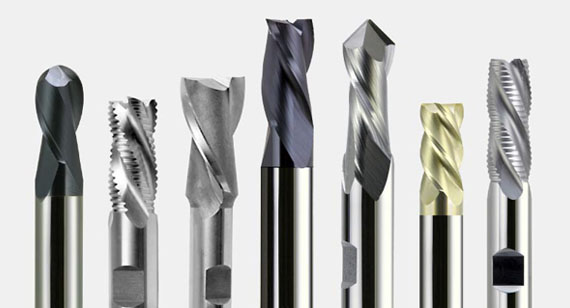
What Are End Mills?
End mills differ from drills in that they can cut in multiple directions, not just along the axis. These tools are typically made from high-speed steel (HSS), carbide, or cermet materials and are available in a wide range of shapes and sizes, each serving a different purpose in machining operations.
1.1 Ball Mill Tools
Ball end mills have a rounded tip, ideal for 3D contouring and curved surfaces. They are commonly used in CNC prototype machining for creating intricate geometries like molds and dies.
1.2 Square Milling Cutters
Square end mills (also known as flat end mills) feature a flat cutting surface and are used for slotting, profiling, and roughing operations. These are versatile tools that provide a sharp, precise cut.
1.3 Circular End Mills
Circular end mills (also known as radius end mills) have a semicircular cutting edge and are designed for producing grooves or channels in the workpiece.
1.4 Bottom Cutting End Mills
These end mills have cutting edges on the bottom and sides, allowing them to cut straight down into the material and create flat-bottomed holes or slots.
1.5 Corner Radius End Mills
Corner radius end mills feature rounded edges to provide extra durability and reduce the likelihood of chipping. They are ideal for cutting hard materials and prolonging tool life.
1.6 Corner Rounding End Mills
These tools are designed to round off the corners of a workpiece, ensuring smooth transitions between surfaces, which is particularly useful for improving aesthetic and functional properties.
Category #2: Face Mills
Face mills are designed to cut flat surfaces by removing material from the top of a workpiece. They have multiple cutting teeth and are often used in CNC machining factories for facing operations, which ensure a smooth and uniform surface finish. Face mills are known for their ability to remove large amounts of material quickly, making them ideal for high-volume production runs.
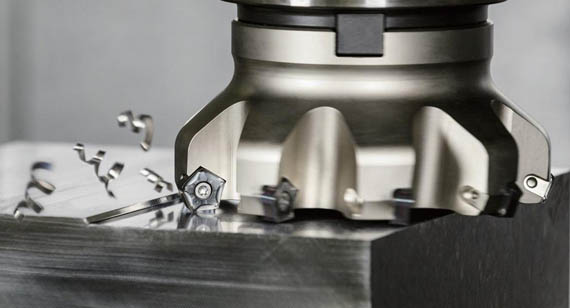
Category #3: T-Slot Mills
T-slot milling cutters are specifically designed to cut T-shaped slots in workpieces. These slots are commonly used in machine tables to hold down clamps or fixtures. T-slot mills feature cutting teeth on the sides and bottom, allowing them to cut both vertically and horizontally.
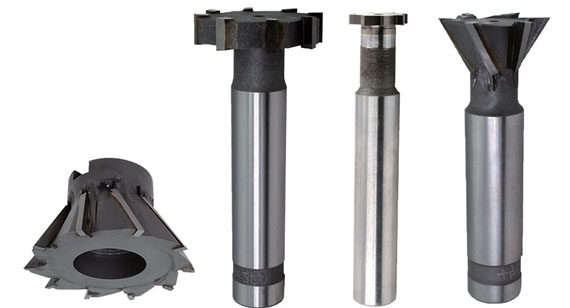
Category #4: Metal Cutting Saw Tools
Metal cutting saw tools are used for slicing through metal workpieces with precision and speed. These tools are typically used in cutting applications where a smooth finish is not as critical, but accuracy is still required.
4.1 General Metal Cutting Machines
These saw tools are used for general-purpose metal cutting and come in various shapes, such as circular and band saws, which are designed for cutting straight through metal plates or bars.
4.2 Side Tooth Longitudinal Shears
These cutters are equipped with cutting teeth along the sides and are designed for shearing or slicing through metal sheets longitudinally, offering precise cutting control.
4.3 Concave Milling Cutters
These milling cutters have concave cutting edges, making them ideal for producing curved surfaces and creating hollowed-out features in the workpiece.
4.4 Cylindrical Milling Cutters
Cylindrical milling cutters are used for cylindrical milling operations and are commonly employed for generating flat surfaces, gear cutting, or slotting.
4.5 General Milling Cutters
General-purpose milling cutters are versatile tools used for roughing and finishing a wide range of materials in various applications.
Category #5: Flying Shears
Flying shears are designed for cutting moving materials, typically in continuous production processes such as metal sheet manufacturing. These tools cut through the material as it moves, without interrupting the production line.
5.1 Spot Cutting
Spot cutting tools are used to make precise, localized cuts in a workpiece without causing deformation or damaging surrounding areas.
5.2 Rotary Engraving Tools
Rotary engraving tools are used for adding detailed designs or text to a workpiece. These tools are ideal for decorative applications or marking parts with important information like serial numbers.
5.3 Rotary Cutting Tools
Rotary cutting tools use rotational force to cut through materials, often for high-speed operations where accuracy and repeatability are critical.
Category #6: Forming Mills
Forming mills are designed to shape the workpiece into a predefined form. They are used in applications where complex geometries or custom shapes are needed.
6.1 Convex Mills
Convex mills have a rounded profile and are used to cut concave shapes in the workpiece, often for creating complex curves and radii.
6.2 Corner Radius Mills
Corner radius mills are used to round off sharp edges, improving the strength and durability of the part by eliminating stress concentration points.
6.3 Insert Tooth Mills
Insert tooth mills feature replaceable cutting inserts, allowing for easy maintenance and reducing downtime. These are ideal for heavy-duty milling operations.
The material of the milling cutter significantly impacts its performance, longevity, and ability to handle different workpieces. Various materials are used depending on the requirements of the operation and the material being machined.
Carbon Tool Steels
Carbon tool steels are commonly used for low-cost milling cutters but are limited in performance due to their low hardness and wear resistance at high temperatures.
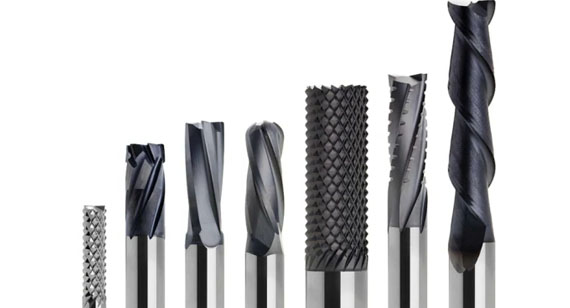
High Speed Steel (HSS)
High-speed steel (HSS) is one of the most common materials for milling cutters due to its versatility, durability, and ability to withstand high cutting speeds without losing hardness. HSS tools are suitable for a wide range of materials, from metals to plastics.
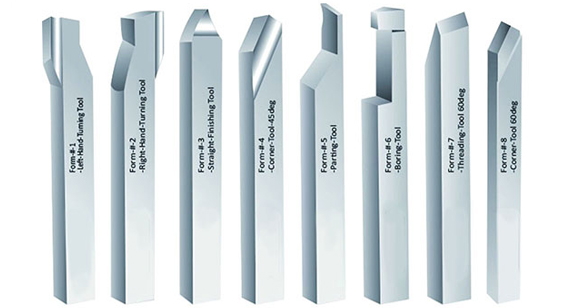
Carbide Tools and Cermets
Carbide milling tools are significantly harder than HSS and can operate at higher speeds, providing better wear resistance and longer tool life. Cermets, a composite of ceramic and metal, offer excellent heat resistance, making them ideal for high-temperature machining operations.
Ceramic Products
Ceramic tools offer superior hardness and heat resistance, making them suitable for high-speed machining of hard materials like cast iron and superalloys. However, ceramics are brittle and may not be suitable for applications involving heavy mechanical stress.
Stellite Alloys
Stellite alloys, known for their toughness and wear resistance, are used in specialized milling tools that require excellent performance in abrasive conditions.
Choosing the right milling tool involves considering several factors, including the tool's size, power, material, and specific application. These tips will help you select the best milling cutter for your CNC machining services.
Milling Cutter Size and Diameter
The size and diameter of the milling cutter should match the dimensions of the workpiece and the type of cut you need to make. For example, larger diameter cutters are ideal for cutting broad surfaces, while smaller cutters are better for intricate work.
Milling Cutter Power
Ensure the milling cutter’s power is sufficient for the material you are machining. For harder materials, you’ll need more powerful cutters to maintain efficiency and accuracy.
Choose a Milling Cutter Body
The cutter body’s design will impact its performance and versatility. Multi-insert cutter bodies are ideal for heavy-duty milling, while single-insert cutters offer greater precision for detailed work.
Choose a Milling Cutter Insert
When choosing a milling cutter insert, consider the material, geometry, and coating. Inserts made from carbide or cermet offer better durability, while coated inserts provide added wear resistance for longer tool life.
Understanding the different types of milling cutters and their applications is essential for achieving optimal results in CNC machining. From end mills to face mills and T-slot cutters, each tool serves a unique purpose and has specific advantages. Selecting the right tool based on your project’s requirements, material type, and machining process will help improve efficiency, reduce costs, and ensure high-quality CNC machined parts.
At VMT, we specialize in providing custom CNC machining solutions, offering a full range of milling tools and expertise to meet your project’s specific needs.
What is the difference between an end mill and a face mill?
An end mill cuts both horizontally and vertically, while a face mill is used primarily for cutting flat surfaces (face milling).
How to use an end mill?
End mills can be used for a variety of operations such as profiling, slotting, and contouring. The tool should be aligned and properly secured in the machine spindle before beginning the operation.
What is the difference between a drill and a milling cutter?
A drill is used for making holes by cutting vertically along its axis, whereas a milling cutter can cut in multiple directions, including horizontally.
How to choose a milling cutter?
Consider the material of the workpiece, the type of milling operation, tool material, size, and cutting speed when selecting a milling cutter.
What is the difference between a regular milling cutter and a side milling cutter?
A regular milling cutter cuts at the tip, while a side milling cutter has cutting teeth on the sides, allowing it to cut along the edge as well.
What tools are used for milling?
Common tools for milling include end mills, face mills, T-slot cutters, ball mills, and side milling cutters.
What is the most preferred milling technology?
5-axis milling is currently the most advanced and preferred milling technology due to its ability to machine complex parts with high precision and fewer setups.
What are the two general types of milling cutters?
The two general types are end mills, which are used for versatile applications, and face mills, which are primarily used for cutting flat surfaces.
